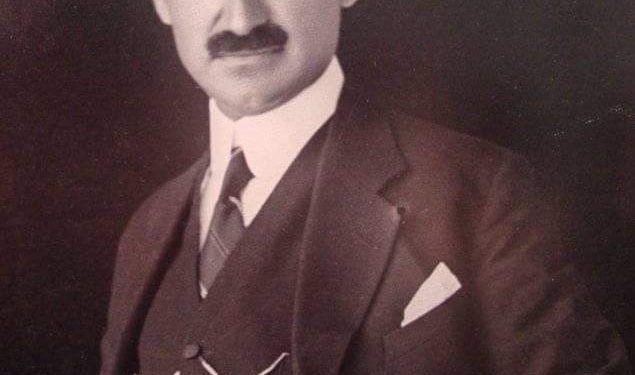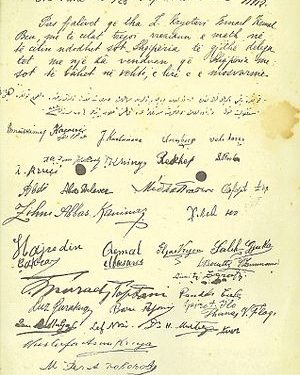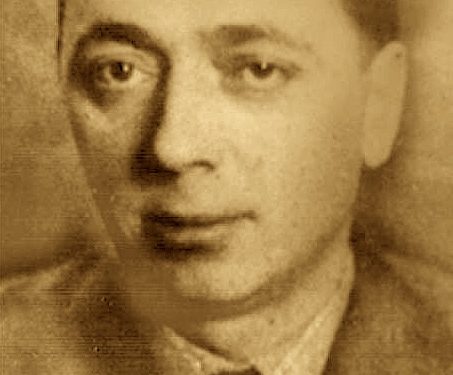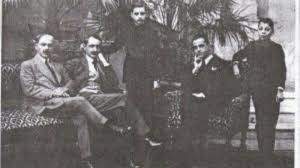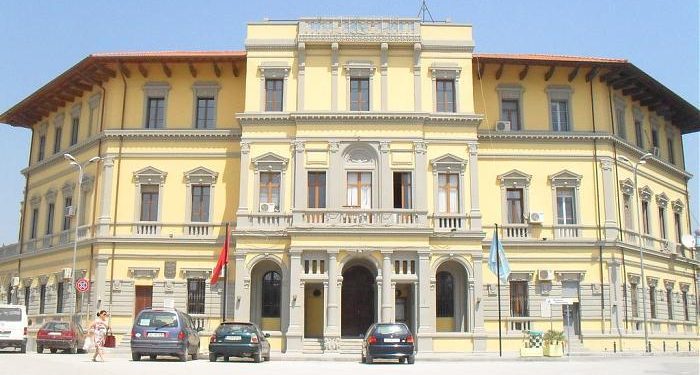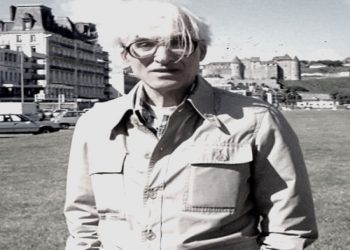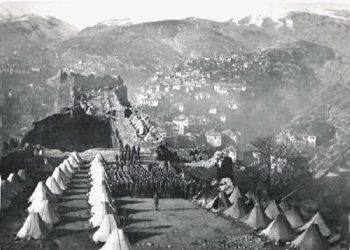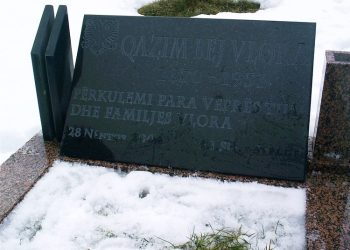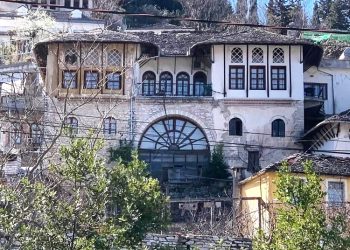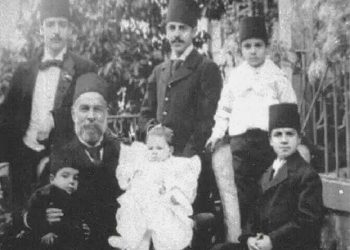Dashnor Kaloçi
Memorie.al publishes the unknown story of the Kokoshi family from the city of Vlora, where one of the most famous suckers that came out of that big door, was Qazim Kokoshi, who after finishing “Zosimea” in Ioannina, returned to Albania and engaged with the Club “Laberia” spreading Albanian books and in November 1912, received Ismail Qemali and was one of the signatories of the act of Independence, and in 1920 was one of the main leaders of the Vlora War and was elected mayor Hers. For these merits he was elected delegate to the Congress of Lushnja, and in June 1924, he joined his close friends, Fan Noli and Luigj Gurakuqi, and for this reason he was forced to leave Albania and then be imprisoned by King Zog, who released him with an amnesty. While the Italians and Germans persecuted his family and ostracized him by deporting him to extermination camps, the Communists arrested and tortured him to death in 1947, shooting and imprisoning many members of his family!
When Qazim Kokoshi returned to Albania from exile, many of his friends, including Dr. Omer Nishani, who at that time held the position of Chairman of the Presidium of the People’s Assembly, tried and called on him to cooperate with the communists who had come to power. Qazimi, not only refused categorically, but held them responsible for the massacre that had taken place in Albania from the fratricidal war started by the communists themselves. In response to Qazim’s accusation, the communists arrested him in April 1946 when he was 64 years old and isolated him in the Vlora investigation, where he also died from torture in October 1947. “The man who speaks and testifies about for the first time for Memorie.al, is Burim Kokoshi, one of the suckers of the very famous family from Vlora, who told us about the tragedy suffered by his tribe from the communist regime of Enver Hoxha. What is the story of the famous Kokoshi family? Who was Qazim Kokoshi and what was his political activity, from 1912 where he signed the act of Independence with Ismail Qemali until 1945 when he returned to Albania from the Nazi fascist internment camps? were the other men of the Kokoshi family, what activity did they have and how were they persecuted by the communist regime for almost half a century?
Who was Qazim Kokoshi?
Qazim Kokoshi was born in the city of Vlora in 1882, in a well-known family which had settled there since the end of the 17th century. The early origin of the Kokoshi family is from the village of Frashër in Përmet and its ancestors moved from there at the end of the 16th century due to enmity problems, and later settled in the village of Hysoverdhë in Vlora. With the money they earned from the sale of their property and assets in the village of Frashër, they managed to buy land and houses and increase their wealth even more in Vlora. Most of the Kokoshi family’s wealth has been used by them to educate their sons in universities in Turkey and other European countries, as well as for problems related to the National cause. In addition to the educated men that the family had produced, there were also men with rifles, such as Zenel Kokoshi, who was well known for his bravery as far as Istanbul, due to the anti-Ottoman wars that took place there in the middle of the century. of the XVIII. But one of the most famous suckers of the Kokoshi family, who has made a big name in the history of Albania, has been Qazim Kokoshi. He received his first lessons in the Turkish school of the city of Vlora at the beginning of the last decade of the XVIII century and after that he went to Ioannina where he finished the gymnasium “Zosimea”. After graduating from that school around the beginning of the 1900s, Qazimi returned to his hometown and joined the Club “Laberia” where he worked for the spread of the Albanian language in the villages of Vlora. Regarding the later activity of Qazim Kokoshi for the benefit of the Albanian cause, Burim Kokoshi testified to us: “In September 1908, Qazim organized the reception of Ismail Qemali in Vlora and personally accompanied him on his visits to Dukat, Mesaplik and Treblovë When the Ottoman administration authorities in Albania tracked down the activities of the Labëria Club and launched arrests of its members, Qazim Kokoshi fled to the island of Corfu and then to Italy. returned to Albania in 1911, after the Vlora parish had appointed her as its representative in the Assembly of Gërçë, where he cooperated closely with Ismail Qemali and Luigj Gurakuqi “, said Burim Kokoshi regarding the patriotic activity of Qazim in the first decade of the last century.
1912, signatory of the Act of Independence
Qazim Kokoshi continued his patriotic activity for the benefit of the Albanian cause even after the Assembly of Gërçë and in 1912, he was one of the main people who supported the arrival of Ismail Qemali for raising the flag in Vlora. In this regard. Burim Kokoshi testified: “In the autumn of 1912, when the Vlora nobility began preparations for the reception of Ismail Qemali, Qazimi was appointed to the commission that would deal with the Declaration of Independence. In the archival documents of the Declaration of Independence, there is also a telegram of Ismail Qemali who on November 21 sent from Durrës to Qazim Kokoshi, Et’hem Bey and Bektash Cakrani, where among other things it is written: ‘Make all the necessary preparations.’ When Ismail Qemali arrived in Vlora, Qazim Kokoshi was one of the signatories of the Act of Independence which was signed by all the delegates who were represented at that meeting.After that, in August 1913, the Provisional Government of Vlora appointed Qazim as the Deputy Prefect of Lushnja, where he went together with Ahmet Lepenica After working for about six or seven months in that position, in February 1914, he was appointed to the post of Chief Secretary of the Prefecture of Vlora, which at that time had become the main center where the politics of Sh. qipërisë. After the fall of the Government of Vlora, Qazimi was appointed as a member of the delegation that would go to Durrës to hold a meeting with Prince Vidin “, testified Burim Kokoshi regarding his cousin Qazimi, who was one of the main people where Ismail was supported Qemali in Vlora when he declared the Independence of Albania
In the Congress of Lushnja and the War of Vlora
Recognizing the immaculate and patriotic past of Qazim Kokoshi, in January 1920, the Vlora nobility elected him a delegate to the Lushnja Congress, while in the summer of 1920 he was also appointed to the composition of the commission of 12 -self who dealt with the direction of the Vlora War. After the first victories achieved by the Albanian military and volunteer forces against the Italians in the Vlora War, Qazimi was appointed deputy prefect in the administrative center of Drashovica. During that period of fighting, considering him as one of the main exponents of the Vlora parish, Italian forces sentenced Qazim to death and burned his houses. After the end of the Vlora War, for the contribution he gave, the Vlora nobility proposed him as a candidate in the elections that would take place for the position of Mayor of Vlora, where he won. After serving for some time in that position, Qazimi competed in the parliamentary elections that took place in 1921 where he was elected member of the first Albanian Parliament. Three years later, in the June Movement of 1924, Qazim Kokoshi joined the opposition group led by Fan Noli and Luigj Gurakuqi, who organized the violent overthrow of the Government of Shefqet Vërlac. After the failure of this move, Qazimi emigrated from Albania and settled in Italy and then in Austria. Taking advantage of the amnesty granted by King Zog to all those who participated in that event since the official historiography of Enver Hoxha’s communist regime before the 1990s is known as the “June Revolution of 1924”, Qazim Kokoshi was returned to Albania in 1928 and settled in the city of Vlora, in the Skelë neighborhood where the Kokoshi family had their homes. Although Qazimi benefited from the amnesty of King Zog, he did not stop his anti-Zogist activity even after returning to Albania, being one of the main members of the secret Movement of Vlora in 1932, who wanted to overthrow King Zog. Following the discovery of this movement, he was arrested as one of its main exponents and sentenced to death by the Special Court in Tirana. But then King Zog himself removed the capital sentence and he suffered in prison until his release in 1936. After his release from prison Qazim Kokoshi agreed with King Zog and the policy he pursued. In this regard, Burim Kokoshi testified: “In April 1939, when the Italian Count Salvone distributed several envelopes of money to paralyze the anti-Italian resistance of the Vlora parish, one of these envelopes was handed over to Qazim. He not only refused to categorical way to get that money, but the next day he went alone to Tirana where he met King Zog, handed him the envelope with the money and showed him everything that was being prepared by the Italians.After the fascist aggression “Qazimi left Albania with his family and settled in Yugoslavia as a political emigrant.”
Persecution by the Italians and Germans
Seeing the anti-Italian attitude of the Kokoshi family in Vlora, immediately after the start of the Italo-Greek war, the fascist authorities launched arrests and deportations of her suckers. In the early 1940s, lawyer Kudret Kokoshi and his cousin Muharrem Kokoshi were arrested and deported to Italy. After that, on January 17, 1943, by order of General Xanin, Astrit Kokoshi was taken from prison (together with Mitaq Salalata) and shot. At this time from Yugoslavia came to Albania, the husband of Qazmi’s daughter, Reshit Çollaku (People’s Hero) who was killed by the Italians. When German troops entered Yugoslavia, the Gestapo arrested Qazim Kokoshi and handed him over to the Italians, who deported him to Bergamo in northern Italy. “Also, in 1944, the German Gestapo arrested Kudret Kokoshi who worked as a prosecutor in Prizren and interned him in the extermination camps he had opened in several European countries”, recalled Burim Kokoshi regarding the persecution of the Kokoshi tribe by the Italians and Germans.
Persecution by the Communists
As if the interments, imprisonments and shootings that the Kokoshi family had suffered from the Italians and the Germans were not enough, immediately after the end of the War she was found under the savage persecution of the communists who came to power. Regarding this source, Kokoshoi testified: “Since May 1945, Meto Hasan Kokoshi was arrested and after being sentenced to death by the Court of Vlora, with the accusation:” He took part in the war with the National Front “, he was shot in November 1945. Two months later, in July 1945, Dinush Hasim Kokoshi, who had graduated from Economics abroad, was arrested and sentenced to three years in prison. After Meto was shot, his brother, lawyer Kudret Kokoshi, was also sentenced to death. , who had been interned in Nazi extermination camps.But the Supreme Court reduced him to 25 years in prison, of which he served 20 years in the horrific and infamous Burrell Prison.In April 1946, charged as A member of the Balli and the Parliamentary Group, Avdul Hasim Kokoshi, a lawyer who had graduated in Rome, was arrested and initially sentenced to only two years, then returned to the investigator and sentenced to death by firing squad in October 1947. Also, in April 1946, Qazim Kokoshi was arrested, who is the returned to Albania from Nazi exile, in 1945. At that time many of his friends including Dr. Omer Nishani, tried and called on him to cooperate with the communists who had come to power, but Qazimi, not only refused, but he openly accused them of being responsible for the massacre that took place in Albania by the fratricidal war of which had been started by the communists themselves. In response to this accusation of Qazim, the communists isolated him in the investigation of Vlora where he also died from torture in October 1947. In August 1946, Engjëll Kokoshi was arrested and initially sentenced to death, and more after 25 years in prison. Angel suffered a full 17 years in prison, mostly in Burrel. The series of arrests of members of the Kokoshi tribe continued in June 1946, with the arrest of Fatos, Qazim’s son, who had completed his engineering studies in France. “After serving ten years in prison, he died because he could not resist the work of the wing”, concludes the tragic testimony on the persecution of his family, Burim Kokoshi, who himself was arrested in August 1946 and suffered for 13 -years in the prisons of the communist regime, for the only fact that he came from the well-known Kokoshi family, which the communists had declared a “reactionary family”./ Memorie.al




